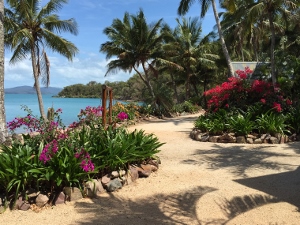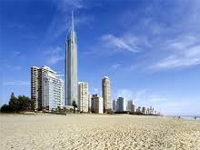Veins used to stop tourists being left on the reef
A world-first electronic tracker using tourists’ hand prints to monitor their movements is being trialled on the Great Barrier Reef to reduce the risk of tourists being left behind.
The prototype of the Tourist Onboard Management System, or TOMS, was tested for the first time off the coast of Cairns this week.
It is two decades since Americans Tom and Eileen Lonergan were left behind while diving on the Great Barrier Reef off Port Douglas in far north Queensland. They were never found.
Several other people have also been left behind in the years since the Lonergans’ disappearance due to incorrect counts, with dive operators still using clickers to take a manual headcount of onboard clients.
TOMS International director Tony Raftis told the ABC the Australian-developed invention uses a palm vein scanning technology created by Fujitsu to identify passengers on board tourism boats.
“What this device does is takes an infrared image of the vein structure in your palm and uses that to identify the person who wants to access the vessel,” he said.
“The identification is nearly instantaneous so once you enrol that palm, it’ll identify you or reject you almost immediately so it’s very, very fast and secure.
“The skipper at any time can see where all his passengers are and can make sure, before he leaves that site, that all his passengers are on the vessel.”
The palm-scanning technology is already used in a variety of industries around the world including banking and security, but this is the first time it had been used in the tourism sector.
Steve Moon from the Association of Marine Park Tourism Operators in Queensland told the ABC there had been several cases of divers being left behind on the Great Barrier Reef.
He said the TOMS technology could be a game changer for the industry and had the potential to be rolled out to dive boats worldwide.
“Marine tourism has gone through a lot of changes over the years when it comes to safety and at the moment we’re doing headcounts following some unfortunate incidents,” he said.
“This is the first time we’ve had real time tracking of what passengers are doing on the vessel so the master of the vessel is at every moment fully aware of exactly where these people are.”
If installed on commercial tour vessels, passengers would register their palms with TOMS technology at the terminal before boarding and scan their palms every time they got on and off the boat.
“If an unfortunate incident does happen you know exactly where that person is at that moment, so it would be timesaving which in itself could be lifesaving,” Mr Moon said.
Mr Raftis said the trial had so far proven successful, but the technology was in its very early stages.
He said the system would be trialled on a tourist boat in Cairns over the next few months, and he hoped it would be rolled out commercially within the next 12 months.

AccomNews is not affiliated with any government agency, body or political party. We are an independently owned, family-operated magazine.






